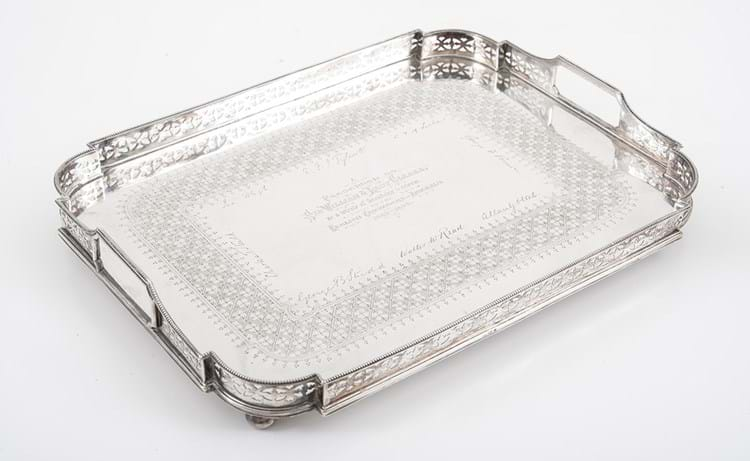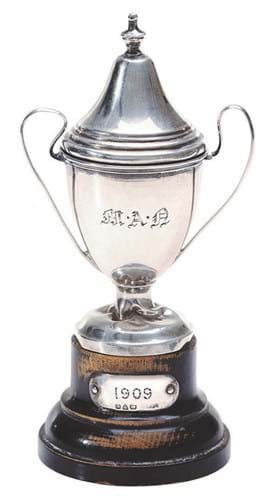
The story of the most fiercely contested trophy in Test cricket originates in 1882 and the first defeat for England on home soil. Journalist Reginald Brooks published his now famous obituary in The Sporting Times mourning the ‘death’ of English cricket with the body ‘cremated and the ashes taken back to Australia’.
Later that year Ivo Bligh (later Lord Darnley) captained England’s team on their tour to Australia, when a group of Melbourne ladies, including his future wife, Florence Morphy and her companion, Lady Clarke, wife of the president of the Melbourne Cricket Club, Sir William Clarke, presented Bligh with a small urn inside a velvet bag, said, in jest, to contain ‘The Ashes’.
In turn, Bligh gave the Clarkes this silver tray engraved A tribute to friendship and esteem. It is estimated at Aus$80,000-100,000.
The original ‘Darnley Urn’ remained with the Bligh family (and was later bequeathed to Lord’s Cricket Club) with a series of other trophies subsequently held aloft by victorious teams.

The Monty Noble silver Ashes urn, 1909, estimate Aus$50,000-70,000 at Leonard Joel in Melbourne on December 7.
Also included in the sale – the auctioneer’s first dedicated to sporting memorabilia - is a simple silver trophy and cover known as the Noble urn. After a 2-1 victory for the baggy greens in 1909, it was presented to Australia captain Monty Noble by Lady Darnley. It is being offered for sale by Noble’s family with hopes of Aus$50,000-70,000). Max Williamson, head of sporting memorabilia at Leonard Joel said “An Ashes urn is the pinnacle for any cricketing memorabilia collector and this is one of only three we know of still in private hands.”
The Monty Noble collection includes other trophies commemorating significant moments in his career, including a gold vesta case engraved as a ’Souvenir of the Tenth Australian Eleven, 1899, as well as original team photographs and has a combined estimate of Aus$70,000-100,000.





